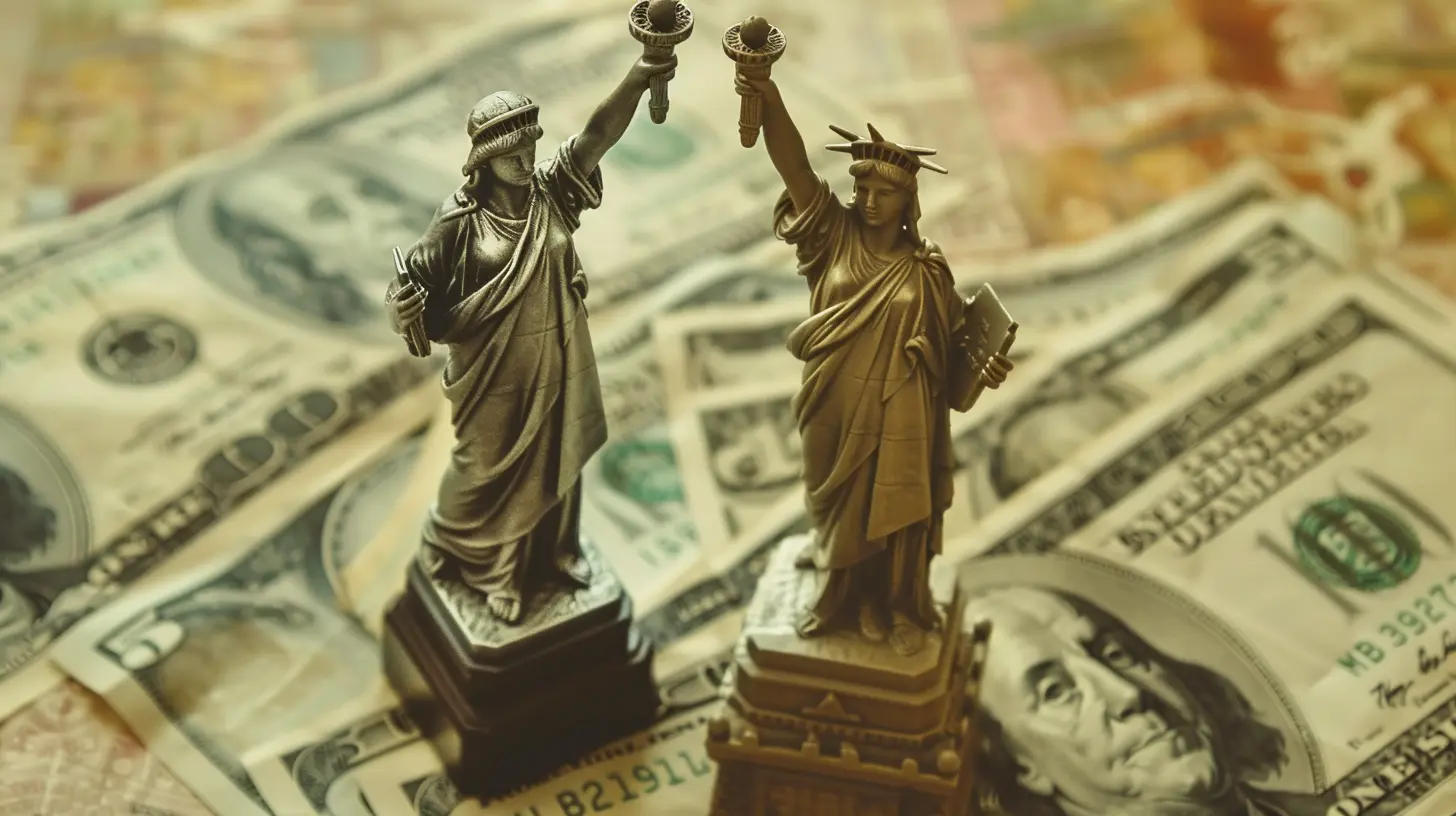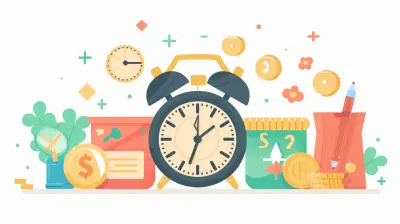Student Loan Forgiveness: Myth vs. Reality
3 September 2025
Student loan forgiveness is a topic that sparks hope, confusion, and debate. For millions of borrowers, it's a potential financial lifeline. But with so much misinformation floating around, it's easy to get caught up in myths that can lead to unrealistic expectations—or unnecessary panic.
So, what’s real, and what’s just wishful thinking? In this article, we’ll break down the most common myths about student loan forgiveness and reveal the facts you need to know. 
Myth #1: The Government Will Cancel All Student Loan Debt for Everyone
Reality: Large-Scale Forgiveness Isn’t Guaranteed
Wouldn't it be nice if the government just wiped away all student loan debt? Unfortunately, that’s a pipe dream—at least for now. While some politicians have proposed broad debt cancellation, no law has been passed that guarantees full forgiveness for all borrowers.The Biden administration has made moves toward student debt relief, such as canceling some loans under targeted forgiveness programs, but a blanket cancellation for everyone is far from reality. Instead, most forgiveness programs require years of repayments, meeting strict requirements, or working in specific professions. 
Myth #2: Student Loan Forgiveness Programs Are Automatic
Reality: You Have to Apply and Meet Specific Requirements
If there were a magic button that erased student debt, we'd all be pushing it. But student loan forgiveness doesn't work that way. Most programs require borrowers to apply, meet eligibility criteria, and provide documentation.For example, Public Service Loan Forgiveness (PSLF) requires applicants to work full-time in qualifying government or non-profit jobs while making 120 qualifying payments. If you don't apply or forget to submit paperwork, you could miss out on forgiveness entirely.
Bottom line? If you think you're eligible for a program, take action by applying and staying on top of requirements. 
Myth #3: If You Make Payments Long Enough, Your Loans Will Disappear
Reality: Only Certain Programs Offer Forgiveness After a Set Time
Not all student loans magically vanish after a certain number of years. However, some repayment plans do lead to forgiveness, but only under specific conditions:- Income-Driven Repayment (IDR) Plans forgive remaining balances after 20 or 25 years of payments, but only if you stay enrolled in the plan and meet its conditions.
- PSLF forgives loans after 10 years of qualifying payments, but only for eligible workers in public service roles.
If you're simply making payments without being on one of these plans, your loans won’t just disappear over time. 
Myth #4: Private Student Loans Can Be Forgiven Too
Reality: Federal Forgiveness Programs Only Apply to Federal Loans
If you took out private student loans, you’re out of luck when it comes to federal forgiveness programs. Unfortunately, private lenders do not offer forgiveness programs similar to those available for federal student loans.While you might have options like refinancing to lower interest rates, you won’t find government-sponsored relief programs for private loans. However, in rare cases, private lenders may offer hardship programs or deferment options, so it’s always worth checking with your lender.
Myth #5: You Can’t Get Loan Forgiveness If You Missed Payments
Reality: You May Still Qualify, But It Depends on the Program
Missed a few payments? Don't panic just yet. Missing payments won't always disqualify you from forgiveness, but it depends on the program:- For PSLF, only qualifying payments count, meaning missed payments won't move you forward but also won't necessarily disqualify you.
- With Income-Driven Repayment forgiveness, payments made on time over 20-25 years matter, but pauses due to hardship forbearance can delay forgiveness.
- If you're in default, you’ll need to rehabilitate or consolidate your loans before benefiting from forgiveness programs.
So, while missed payments can slow progress, they don’t always mean you're out of the game.
Myth #6: Loan Forgiveness is a Simple, Fast Process
Reality: It Can Be Complicated and Take Years
If you’re expecting student loan forgiveness to be quick and easy, think again. Programs like PSLF and IDR forgiveness require years of consistent payments and paperwork.Even after submitting an application, borrowers often face delays, rejections due to paperwork errors, or requests for more documentation. Many PSLF applicants were previously denied due to technical mistakes before recent reforms helped fix these issues.
The key takeaway? Patience and persistence are necessary. Keep detailed records of payments, submit forms on time, and follow up with your loan servicer regularly.
Myth #7: You’ll Owe Taxes on Forgiven Loans
Reality: It Depends on the Type of Forgiveness
Not all forgiven student loans are tax-free. The tax consequences vary:- Public Service Loan Forgiveness (PSLF) is completely tax-free, meaning you won’t owe anything when your debt is erased.
- Income-Driven Repayment Forgiveness (after 20-25 years) was previously subject to taxes, but until at least 2025, forgiven student debt is tax-free under current law.
- Employer Student Loan Repayment Assistance may be taxable depending on your employer's program.
It’s always best to check current tax laws or talk to a tax professional to understand your specific situation.
Myth #8: Student Loan Forgiveness Will Ruin Your Credit
Reality: Forgiveness Won’t Hurt Your Credit Score
One of the biggest fears is that student loan forgiveness will wreck your credit. But that’s not true! Having your loans forgiven doesn’t negatively impact your credit score—in fact, it can help by reducing your overall debt burden.However, missed payments before forgiveness could lower your score, and if you’ve defaulted, that can have long-term consequences. Once your loans are forgiven, though, they will show as “paid” or “discharged,” which can even improve your debt-to-income ratio—a key factor in your credit score.
Myth #9: If You Qualify for Forgiveness, You Should Stop Making Payments
Reality: Stopping Payments Without an Official Approval Can Hurt You
Many borrowers assume that once they submit their forgiveness application, they can stop making payments. Big mistake. Until your loan servicer confirms approval, you are still responsible for making payments.Stopping payments too soon could result in delinquency or even default, which can hurt your credit and disqualify you from forgiveness altogether. Always wait for official confirmation before skipping any payments.
Final Thoughts
Student loan forgiveness is an incredibly valuable option for many borrowers—but it's not a one-size-fits-all solution, and it doesn’t happen overnight. Misunderstanding how these programs work can lead to costly mistakes or missed opportunities.The key? Know the facts, stay informed, and be proactive. If you think you qualify for forgiveness, take steps now to ensure you meet all requirements and don’t leave money on the table.
all images in this post were generated using AI tools
Category:
Student LoansAuthor:

Knight Barrett
Discussion
rate this article
1 comments
Anabella McLanahan
This article provides a clear breakdown of the complexities surrounding student loan forgiveness, distinguishing between common myths and the actual realities. It's essential for borrowers to stay informed about eligibility criteria and potential impacts on credit, ensuring they make educated financial decisions moving forward.
September 9, 2025 at 12:34 PM

Knight Barrett
Thank you for your insightful comment! I'm glad you found the article helpful in clarifying the myths and realities of student loan forgiveness. Staying informed is key for borrowers!


